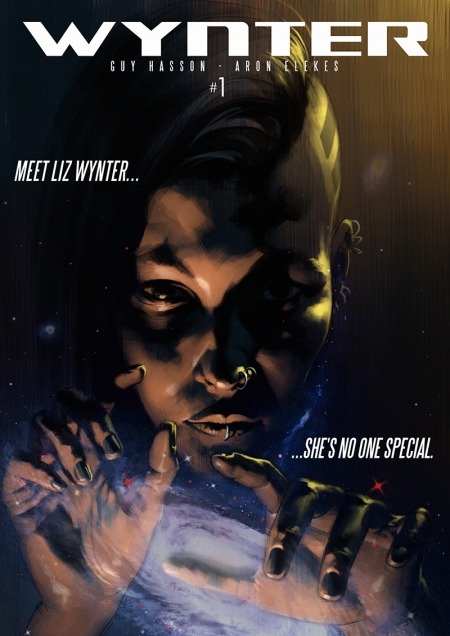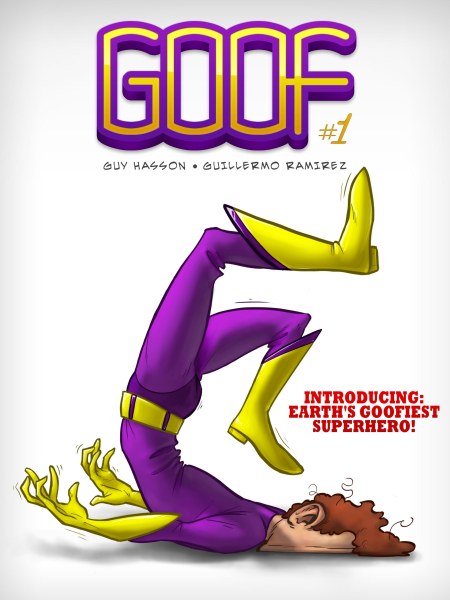I’m an SF author. I come up with ideas. Ideas about the next technology, where things might go in the next few years and how it will change the world. A while ago I came up with an idea called ‘Googlenomics’ that deals with how economy is going to look completely different in the next few years.
As much as I like getting published by SF magazines, I also like my stories to be relevant and influence conversation, and SF magazines have become irrelevant over the last few years, as far as influencing anything in the national zeitgeist. So rather than write a story about Googlenomics, I wrote a fake article, which I published on April Fools in my blog in Gamasutra, where it had a better chance of reaching the audience it was meant for.
So here is the piece, reprinted here.
Who knows, maybe the technology for Googlenomics is already being developed somewhere right now…

Googlenomics Is Coming
INTRODUCING GOOGLENOMICS
By Guy Hasson
I’ve wrestled with myself about whether I should write this post or not. I’ve written it three times, deleted it, emptied the recycle bin, rewrote it. Revealing secure information may get me sued, after all. Revealing this information may have much wider repercussions. But you know what? To hell with it. This is something that should be stopped. I’m not sure anything can stop it, but the first criteria for change is getting the information out there. I’m typing this, publishing it, and not looking back.
I consulted no one but my close friends before publishing it. I do it completely of my own accord and at no one’s behest. Small warning: You’re about to get very angry.
How I Got the Information
I received the information through one of my best friends. I won’t reveal his identity, I’ll just say that I know him for more than fifteen years and I trust him completely. Let’s call him Charley. Charley works for Tru$t, a Chicago-based start-up company you’ve probably never heard of unless you know someone who works there or who finances it.
Tru$t is situated in downtown Chicago, taking only half a floor in Aon Center, on the side overlooking Two Prudential Plaza. It has been around for the last two years, dealing mainly with research. It’s one of those companies that fly under the news radar, because it doesn’t offer the public anything, nor does it want to. In fact, it wishes to remain anonymous until it comes out with its final product.
The Information
The information I received is in the form of emails, leaked to me by Charley, containing inside discussions as well as ongoing negotiations between Tru$t and Google.
What Tru$t wants from Google is to buy the data it has accumulated and is still accumulating about our daily and minutely habits. Google said ‘no’, but when they heard what Tru$t was about, they did not close the door, but kept on listening. Just to be clear: they hadn’t said ‘yes’ yet, but they hadn’t told them to go jump in the river, either. Now bear with me, because that is the least maddening part of the story.
What Tru$t wants from Google is all information about our habits: what we click on, what we don’t click on, what we search for, what we buy, some of the content of our emails, what videos we see and search for on YouTube, who our friends are, what we find important, what we like, and more.. Now the reason Tru$t wants this information is also the reason this deal might just happen. Tru$t wants to revolutionize commerce, first in the internet and then outside it. Tru$t has a long-term plan and the experts and research to pull it off. Having read hundreds of emails on the subject, as well as the documents attached, my mind keeps calling it only one thing: Googlenomics.
The Path to Googlenomics
Stage #1: Tru$t is going to use Google’s data (or someone else’s if the deal falls through, but Google is their first choice) to create social algorithms that will tell Tru$t exactly how much certain products are worth to each of us.
What does this mean? It means that if I’m an artist and I want to buy a Photoshop license, it’s worth more to me than it is to my neighbor who would just like to have the same program for fun. So I would be willing to pay $5,000 in order to be able to work as a freelancer, while my neighbor would only spend $100 on it or he just wouldn’t buy it. Although today we pay the same prices for most products, every product is actually worth something different to different people. It’s also worth something different to the same person at different times (For example: I’m willing to pay a lot more for a tire for my car if I’m stuck in the middle of nowhere with a flat and there’s only one shop that’s milking me dry). ‘Worth’ in this case is defined as the maximum price one would actually pay for a product at a certain moment in time.
Stage #2: Tru$t introduces its product to monopolies. For example, Microsoft. Microsoft has products only it sells, and it sells them at a fixed price to everyone, regardless of how much they’re actually worth to the buyers.
Tru$t’s product will make sure that if you buy a Microsoft product (for example), the price you see is the price that product is worth to you. This means that when I try to buy a certain product, I’ll see price X, and when my friend tries to buy the same product, he’ll see a totally different price. We each see the price we’re willing to pay for that product. And since we can’t get this product elsewhere (it’s a monopoly, after all), we either pay the price it’s worth to us, or we don’t get the product. There’s no shopping around. Another example: Do you really want to play Mass Effect 3 (or, more realistically, when this product comes out, Mass Effect 4)? You just might pay $2,000 or $3,000 for it. Just because you want it badly.
A different price for each customer is so outside our realm of understanding that Tru$t has prepared a document that explains its value. Here is an excerpt, from the document they sent to Google (although they decided to rewrite it afterwards). Here’s how they explain the value of what they offer:
The current system of fixed prices hurts the suppliers financially. With the new system of personality-based prices, our research shows that any supplier can, at the very least, triple their revenues.
Two cases fall under personality-based prices.
Case #1: A customer is willing to pay more than the asked-for price.
Under the current fixed-prices system, the supplier is hurt financially, because he loses the difference between the asked-for price and what the customer is actually willing to pay. With personality-based prices, the customer pays exactly as much as s/he believes the product is worth.
Case #2: A customer is unwilling to pay the asked-for price.
In this case, the customer would like to use the supplier’s product, but does not wish to invest the entire asked-for price. Under the current fixed-prices system, the supplier loses that customer and his money. With personality-based prices, the customer is offered exactly the price he would be willing to pay in order to buy the product. In this case, the customer pays the supplier a sum that in the current, outdated system he would not have paid.
Any supplier using our service will gain additional profits in both instances, and see his/her income skyrocket.
So: We’re going to pay more for things we really want and less for things we don’t. The companies using Tru$t’s products will see their profits “skyrocket”, while Tru$t will get a certain percentage of the income.
(A small note: What did they mean by personality-based pricing. Sometimes how much you’re willing to pay for something isn’t just determined by how much you need it, but by your personality, as well. Are you a haggler who will only pay when prices are down? You’ll pay less under their system. Are you a person who lets other people walk over him? You’ll pay more.)
This by itself will change our entire economy (anything from the way we buy games, monetization in social games, prices in online shops, to prices in actual shops, where you have to identify yourself to buy a product). There are monopolies all around us giving us products we like but don’t really need (Apple anyone?), but there are also monopolies that give us things we can’t do without (water, electricity). How much are water and electricity worth to you? How much will you really pay to have them in your home?
Which brings us to the next stage:
Stage #3: Tru$t is already preparing for the time in which competing companies will appear in the market.
Suppose Tru$t is first on the market with this type of product. Its success and economic potential will mean that other companies will no doubt crop up, creating their own social algorithms and coming up with similar products. So a few years after Tru$t’s initial arrival at the market, it expects to see more such companies appear.
Tru$t is preparing itself for that occasion. Its economists have recommended that when there is more than one such company, Tru$t should expand its product to companies that do not have a monopoly. For example, if Tru$t is alone in the market and works only with McDonald’s, its algorithm will say a lunch is worth $40 to a certain customer on a certain day. But that same customer can cross the street to a Burger King and get the same product for a cheaper price. But if McDonald’s is working with Tru$t and Burger King is working with another social algorithm company, the two products will cost practically the same for the same person on that same day. It’s not worth it for that person to cross the street in search of a better price. So you see, everyone earns more: both companies working with the social algorithm companies as well as both competing social algorithm companies who earn a percentage of said income. Who loses? You know who.
A Massive Game Changer
This is a global game changer. Every aspect of our economy will be transformed, and in a few years will never be the same. Our economy is based on fixed prices with small fluctuations here and there. The new economy will have prices that fluctuate from person to person – a person based economy, or even a personality-based economy. The social algorithm companies will have a hand in (and profit from) almost every economic transaction in the computerized world.
Like I said, I’m not sure this train can be stopped. Even though I’ve released the information ahead of time, Charlie and I differ about whether this knowledge will help change things in any way. I guess we’ll see.
So. Now you know. Googlenomics is coming. What are you going to do about it?















